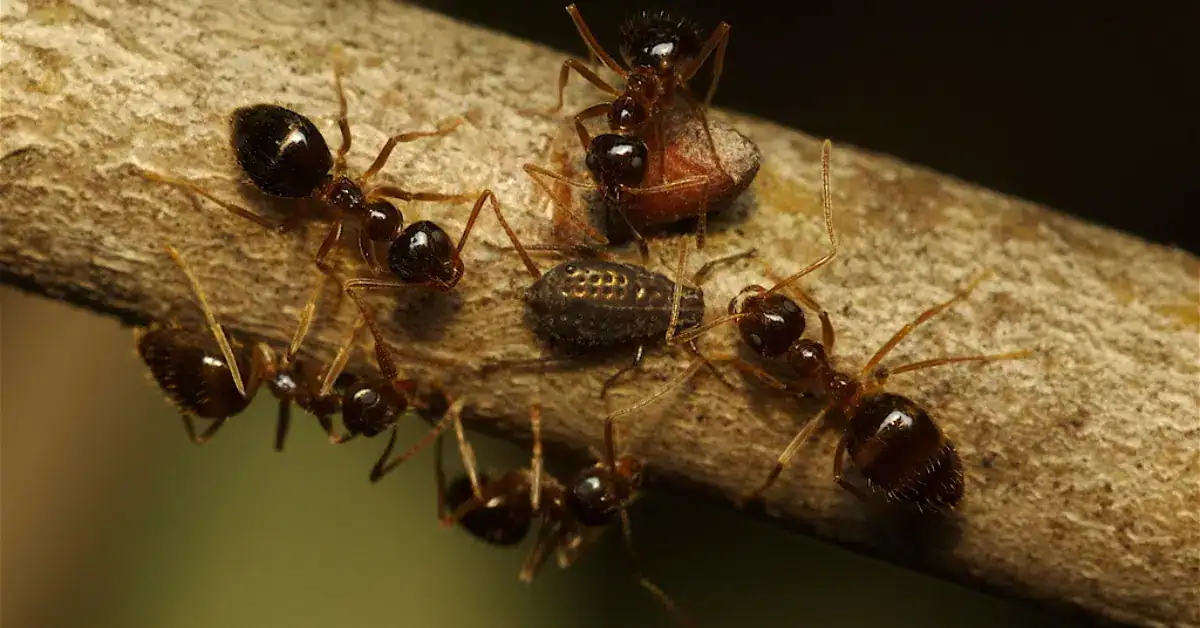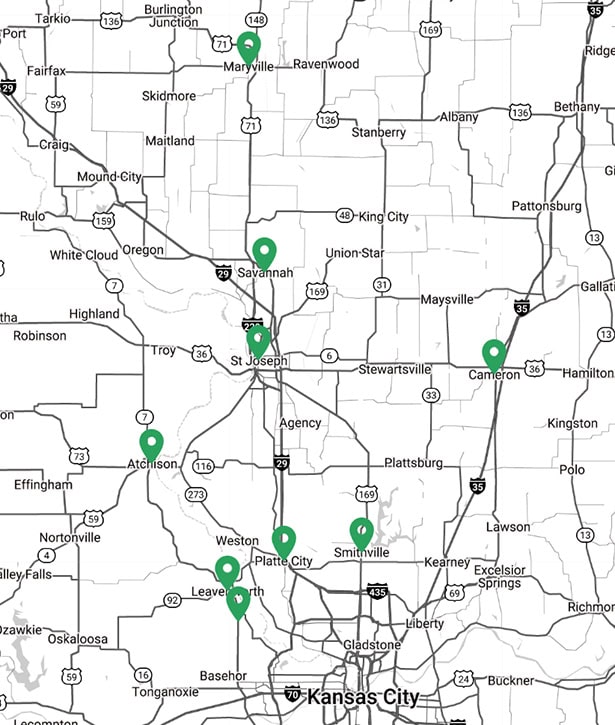
Workers 1/8” long, (monomorphic). Integument soft, flexible, smooth, shiny body. Have a circle of hairs at the tip of their abdomen.
The small honey ant is a native species sometimes referred to as the “false honey ant”. It is also known as the winter ant, because it is more cold tolerant than other species. It ranges from Ontario, Canada to Nebraska, south to Texas and Florida, and also occurs in New Mexico, California, Oregon and Washington. New colonies are started when the over wintering female and males make their nuptial flights from March to April.
Small honey ants build their colonies in the open shaded areas lawns, under concrete slabs, under stones, and landscaping beds. Entire colonies have been collected from potted plants. Small honey ants are persistent invaders and forage in trails. They contaminate and feed on a variety of household foods, such as sugar, syrup, honey, cakes, breads, fruits and meats. They tend aphids, scale insects, and treehoppers for their secreted honeydew, which is a favorite food.
Locally owned, and family operated, committed to the St. Joseph Missouri community for over 50 years
Our certified and extensively train technicians ensure effective, safe pest management
Over five decades of proven Pest Control experience and unparalleled customer satisfaction.
Custom pest management plans tailored to your specific needs for effective, targeted results.
Guaranteed pest control solutions that ensure lasting results in peace of mind
If you don’t see your city on the map, that doesn’t mean we can’t service your area. Please contact us if you have any questions.
Call Us Today
Learn more about our Community Center

14375 US-71, Savannah, MO 64485